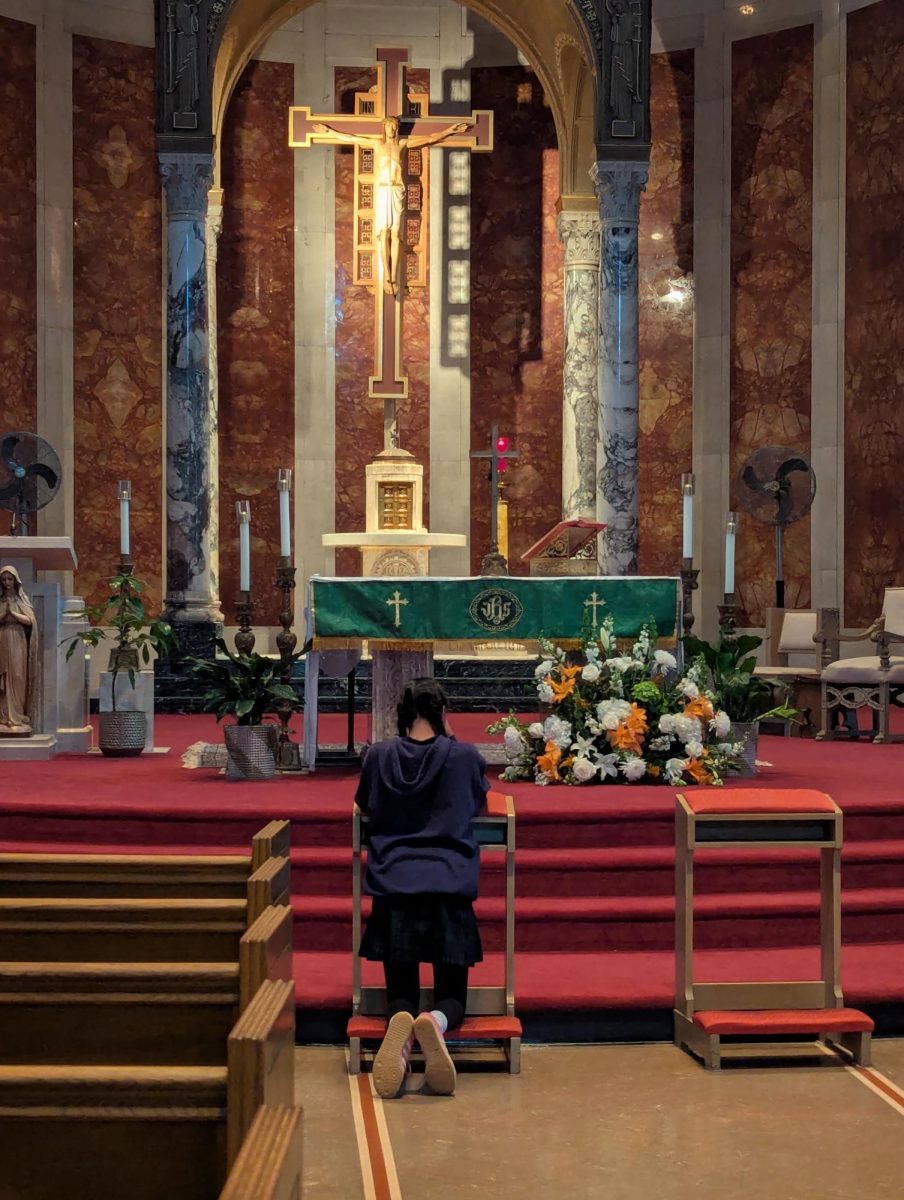The Catholic Social Teachings are guidelines that the Catholic Church shares so that people can live out their faith. According to Ms. Matthews, the 6th and 8th grade religion teacher at St. Robert, they “act as an encouragement for people to bring holiness to their daily life and how they interact with and view the world.” The Catholic Social Teachings are meant to be the guidelines people follow in order to be good stewards of God. A high schooler at St. Thomas More and a graduate of St. Robert, Sophie, states that “they talk about being good people; they aren’t specific to God.” Anyone can use them, not only Catholics. The Catholic Church authored the teachings, but anyone, Catholic or not, can use them to become a better person.
The Catholic Social Teachings are constructed around seven different themes: the dignity of a human person, family and community, rights and responsibilities, the poor and vulnerable, dignity of work, solidarity, and care for God’s creation. Each one is meant to provide guidelines for how people act in their everyday lives. Ms. Matthews explains that the dignity of a human person is the idea that every life is precious from conception to natural death, and all humans are made in the image and likeness of God. Family and community promotes the idea that everyone has a role to play in society for the well being of all human beings. The theme of rights and responsibilities discuss how people have a right to life, but the responsibility to one another. The poor and vulnerable, or option for the poor, put emphasis on placing the needs of the poor first. The dignity of work covers the idea that the basic rights of workers need to be respected. Solidarity outlines how every human being is part of one human family despite the differences they may have. Last, care for God’s creation is the idea that God gave people the beautiful earth and they need to be good stewards towards it.
Many people struggle to live out these principles, but most can manage them. Grace, a 6th grader at St. Robert, mentions that “in life I strive to follow these teachings because I believe that they will help me and other’s to get to heaven.” Following these teachings will not automatically bring people to heaven, but they can bring us closer to God so that their understanding of heaven can be greater. Along with Grace, Ms. Matthews also adds that “It’s different for everyone, but someone could be inspired to work on the half of the dignity of life and to work at a support center for certain people. Another person could look at options for the poor; we have … communities that work to help the poor and vulnerable. People have certain parts of their life that focus on one more than the other. We can be really focused on the environment. People could do that in their work life or normal life. To really understand and explain them has to do with our dealings with people.” Certain individuals focus on one teaching more than another, but all of them do remain important.
Although people follow certain teachings more than others, kids can promote all of the Catholic Social teachings in their daily lives. A 7th grader at St. Robert, Addie, advises that kids can try to do at least one Catholic Social teaching per day. Children can get their families and friends to treat every person as a child of God for the dignity of a human person, spend time with family and the community for family and community, treat everyone with the justice they deserve and handle responsibilities with care for rights and responsibilities, give to the poor by volunteering at shelters for the poor and vulnerable, providing fair jobs for the dignity of work, living in justice and peace for solidarity, and caring for every living thing that God created for care for God’s creation. Everyone, children and adults, should try to live out these teachings as much as they possibly can.





